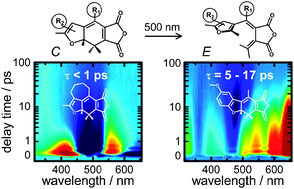Electronic and steric effects on the photo-induced C → E ring-opening of structurally modified furylfulgides
Abstract
The ultrafast C → E ring-opening reactions of four selectively modified furylfulgides have been studied by means of ultrafast broadband transient absorption


 Please wait while we load your content...
Please wait while we load your content...